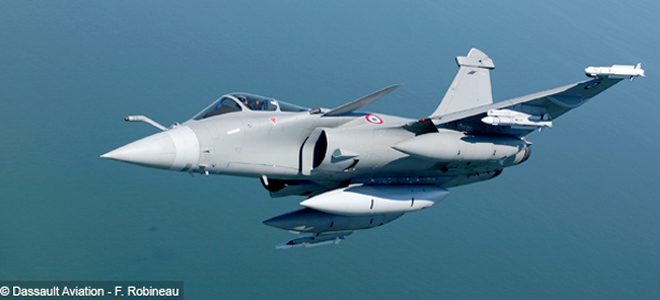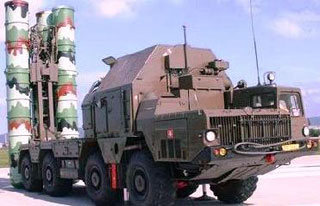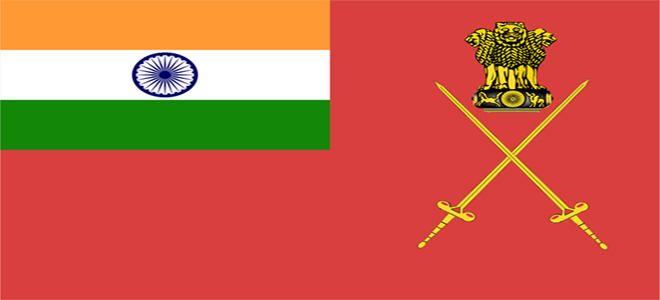
Rafale fighter aircraft. Photo: Dassault Aviation.
NEW DELHI (PTI): India Monday said all future negotiations for purchase of French Rafale fighters would be through government to government route, discarding direct talks with manufacturers.
The disclosure by Defence Minister Manohar Parrikar came two days after Prime Minister Narendra Modi announced purchase of 36 Rafale fighter aircraft in fly-away condition from the French government directly, sidestepping gruelling three-year negotiations for Medium Multi-Role Combat Aircraft(MMRCA) tender.
Narendra Modi announced purchase of 36 Rafale fighter aircraft in fly-away condition from the French government directly, sidestepping a gruelling three-year negotiations for the Medium Multi-Role Combat Aircraft (MMRCA) tender.
While initially the tender was valued at about USD 10 billion for 126 aircraft, the current price is estimated to be over USD 20 billion, over which India had serious reservations.
Noting that negotiations had entered into a "loop" or a "vortex" with no solution in sight, Parrikar said direct negotiations with France will now decide how much more Rafale aircraft has to be bought and whether it will be under 'Make in India' programme.
The Minister refrained from giving a direct reply to questions whether the requirement of Air Force for more MMRCA will be through Rafale or if any other player can come into action.
"Scope was only possible in Government to Government deal. Instead of going through the Request for Proposal (RFP) route where there was lot of confusion and chaos, it was decided that we will go through the G2G route," he said explaining that 36 Rafale jets would be procured in ready-to- fly condition.
He said what has to be done about the rest would be decided after discussions between the two governments.
Asked what will happen to 'Make in India' initiative, Parrikar said, it would be decided after proper discussions.
He said, he won't be able to give more details as the "fine print of what has been agreed in not with me".
Underlining that it was his personal opinion, Parrikar said in certain strategic areas like defence, government-to- government (G2G) route was better.
"Whenever you have complex platform to be acquired, government routes are normally better routes," he said giving the example of DTTI between India and US.
He refused to give a timeline for the delivery of 36 Rafale jets saying, at the Prime Minister's level, the nitty- gritty of a deal is not worked out.
"You agree with the principle. The principle has been agreed. Now the two sides will sit together and will work out all the details," he said.
Asked if India can go beyond 126 Rafale jets, Parrikar said, 126 was itself a "financially a steep slope to climb".
He said that everything will depend on discussions.
"That (Make in India) will depend on how we negotiate. What is the total quantum (of order). We may not go for full 126. That will be decided after we discuss at government to government level".
Asked if this means the MMRCA tender has been scrapped or will die a natural death, the minister pointed out that he has neither said it will die nor that it was scrapped.
"But I can say that it has gone into a loop or vortex. That is why this route had to be taken to break the vortex...now if you start the process once again, by the time you complete it, it will take five years. Day by day, it was becoming more stiff".
He said the G2G route was taken to break the ice.
Talking about the operational requirement of the Indian Air Force, which currently has 34 Squadrons, Parrikar said LCA would be replacing the ageing MiG 21s, whose life has been extended by another eight years or so.
He underlined that Indian now has better missile technology now than the time when the ideal squadron strength for IAF was registered at 42.
Parrikar termed it as "strange", the decision of the previous government to designate only HAL as the partner under the tender.
He said the main problem was the man power ration proposed by HAL which was 2.7, which was "very high" in terms of cost.
Asked from where he will get the money, he said, management of resources was known to him as he had the experience of running a "state government without money when the mining ban was on".
 Previous Article
Previous Article Next Article
Next Article













The Indian Air Force, in its flight trials evaluation report submitted before the Defence Ministry l..
view articleAn insight into the Medium Multi-Role Combat Aircraft competition...
view articleSky enthusiasts can now spot the International Space Station (ISS) commanded by Indian-American astr..
view article